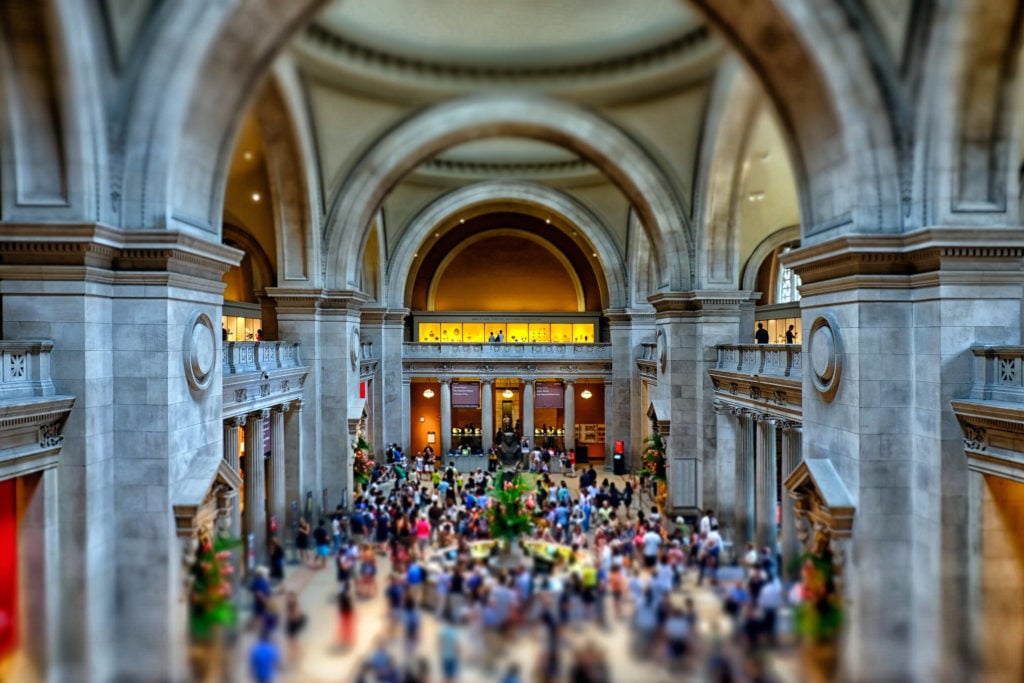Art World
With ‘Open Access,’ the Met Museum’s Digital Operation Has a Bona Fide Hit on Its Hands
The museum's photo-sharing initiative has had a major impact on Wikimedia and Creative Commons.

The museum's photo-sharing initiative has had a major impact on Wikimedia and Creative Commons.

Sarah Cascone

In February, New York’s Metropolitan Museum of Art announced that it was pursuing a new Open Access policy—releasing high-resolution imagery of all its public-domain works (over 375,000 in total). Six months later, the new initiative has had a major impact on sites such as Wikimedia and Creative Commons, and the museum is continuing to branch out. This week, the Met announced a partnership with Google’s data analytics platform, BigQuery.
“During what is just the dawn of this new initiative, the responses so far have been incredible,” wrote Loic Tallon, the museum’s chief digital officer, in a blog post.
The numbers speak for themselves. According to Tallon, the Met’s website has seen a 64 percent increase in image downloads since Open Access was implemented, as well as a 17 percent bump in traffic to the online collection. Users who download photographs are now spending five times as long on the site.
But the biggest beneficiary of the photo-sharing program might be Wikimedia. Over 90 percent of the Open Access photographs have been uploaded to Wikimedia Commons. And since February, there has been a 500 percent increase in new Wikipedia articles featuring photographs from the Met collection, now up to 6,598. The museum recently held its first Wikimedia Edit-a-thon and Met Open Access Art Challenge, adding articles like Hiawatha and Minnehaha, about a pair of busts in the Met collection by pioneering 19th-century African-American sculptor Edmonia Lewis.
The impact of Open Access has also been massive at Creative Commons, where a full two-thirds of searches are now about the museum’s collection—and van Gogh, Monet, Botticelli, and Picasso are just as popular search terms as “cat” and “dog.”
Artist: Giacomo Ceruti
Date: 1740s
Medium: Oil on canvas pic.twitter.com/O87Ku8BLpR— Face-Swap The Met (@artfaceswaps) February 14, 2017
The initiative has piqued the Internet’s interest, too. There are now two hilarious Twitter feeds dedicated to it—Face-Swap the Met and Public Domain Cut-Up (a bot that creates collages using the Met’s Creative Commons images and those of the New York Public Library). The Open Access collection has also generated serious, data-driven analysis from FiveThirtyEight, which breaks down the museum’s holdings by the year that objects were made, the year they were acquired, and their country of origin.
“It’s inspiring to see how creative people are when you make a collection like the Met’s accessible for them to use, share and remix without restriction,” added Tallon in an email to artnet News.
All art lovers are welcome to use the Met’s Open Access photographs—which cover 5,000 years of world culture—for both scholarly and commercial purposes. The high-resolution images are 4,000 pixels wide and are held under a Creative Commons Zero (CC0) designation.
NYPL: City of Paterson. Part of the 4th and..https://t.co/Poc2jq6eNQ
MET: The Creation of the Fish and the Birdshttps://t.co/VOuVLieJ19 pic.twitter.com/zQBFCAdZYq— Public Domain Cut-Up (@PDCutup) August 9, 2017
For the next step, Google will begin to add the Met collection to BigQuery, the first museum data set to join the analytics platform, Tallon wrote in his blog post.
“They’re making it possible to do automated image recognition analyses across all 385,000 public-domain images,” said Tallon in his email. “As these technologies improve, and particularly with the growth of artificial intelligence, I expect we’ll soon be seeing things like complex pattern identifications focused on the aesthetic qualities of the collection, or computer generated predictions about an artist’s next work. It’s an exciting moment to have the data out there!”